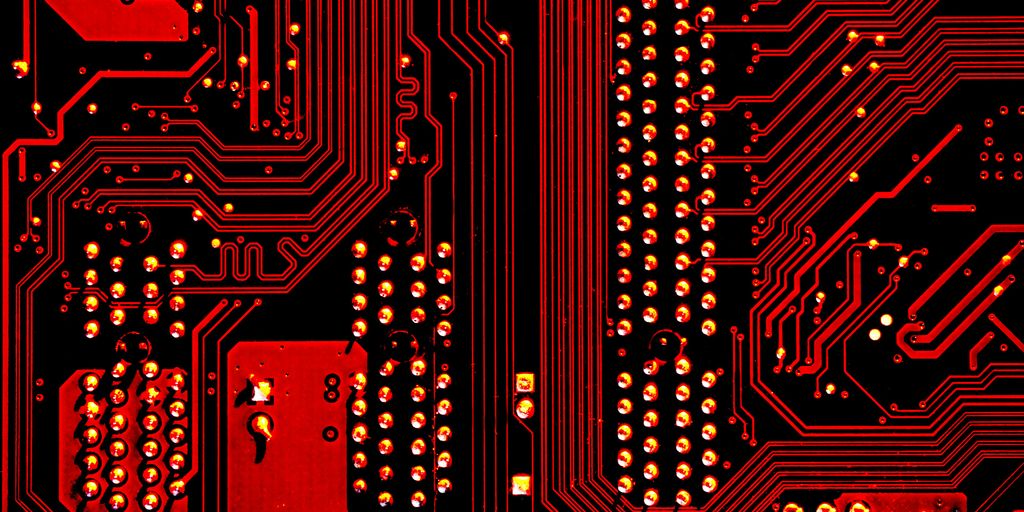
The rapid pace of technological advancement is reshaping industries and societies around the globe. From healthcare to agriculture, the integration of cutting-edge technologies is opening new frontiers and creating unprecedented opportunities. This article delves into some of the most promising and transformative technologies that are set to redefine our future.
Key Takeaways
- AI-facilitated healthcare is revolutionizing patient care, but it also raises important ethical questions.
- Sustainable computing innovations are crucial for reducing the environmental impact of technology.
- Flexible neural electronics hold significant potential for advancements in neuroprosthetics and brain-computer interfaces.
- Wearable plant sensors offer real-time monitoring capabilities that can greatly benefit the agricultural sector.
- The metaverse presents new possibilities for mental health treatment, making therapy more accessible and inclusive.
The Rise of AI-Facilitated Healthcare
Artificial Intelligence (AI) is revolutionizing the healthcare industry, offering unprecedented advancements in diagnostics, treatment, and patient care. AI-powered medical imaging systems are now capable of detecting diseases with remarkable accuracy, transforming the way healthcare professionals approach diagnostics.
Transforming Patient Care
AI is enhancing patient care by providing personalized treatment plans and predictive analytics. Machine learning algorithms analyze vast amounts of data to identify patterns and suggest optimal treatment options. This not only improves patient outcomes but also reduces the burden on healthcare providers.
Ethical Considerations
The integration of AI in healthcare raises important ethical questions. Issues such as data privacy, algorithmic bias, and the potential for job displacement need to be addressed. It is crucial to blend AI with human oversight to ensure ethical standards are maintained.
Future Prospects
The future of AI in healthcare is promising, with ongoing research and development aimed at creating even more sophisticated tools. From AI-driven drug discovery to advanced robotic surgeries, the possibilities are endless. The continued evolution of AI technologies will undoubtedly lead to a more efficient and effective healthcare system.
The rise of AI in healthcare is a marvel with a meaning: rediscovering a sense of wonder in the era of AI.
Innovations in Sustainable Computing
Energy-Efficient Algorithms
Energy-efficient algorithms are at the forefront of sustainable computing. These algorithms are designed to minimize energy consumption while maximizing performance. By optimizing computational processes, they contribute significantly to reducing the carbon footprint of digital operations.
Green Data Centers
Green data centers are revolutionizing the way we store and manage data. These facilities utilize renewable energy sources, advanced cooling techniques, and energy-efficient hardware to minimize environmental impact. The shift towards green data centers is a crucial step in achieving a more sustainable digital future.
Impact on Climate Change
The impact of sustainable computing on climate change cannot be overstated. By reducing energy consumption and promoting the use of renewable resources, sustainable computing practices help mitigate the adverse effects of digital operations on the environment. This approach aligns with global efforts to combat climate change and supports the goal of a sustainable planet.
Sustainable computing is not just a trend; it’s a necessity for a sustainable future. Embracing these innovations is essential for reducing our digital carbon footprint and supporting climate goals.
Advancements in Flexible Neural Electronics
Neuroprosthetics
Flexible neural electronics are revolutionizing the field of neuroprosthetics. These advanced materials and devices offer unprecedented adaptability and integration with the human body. They enable more natural and responsive prosthetic limbs, enhancing the quality of life for amputees and individuals with mobility impairments.
Brain-Computer Interfaces
Brain-computer interfaces (BCIs) are another exciting application of flexible neural electronics. BCIs facilitate direct communication between the brain and external devices, opening up new possibilities for assistive technologies. This innovation is particularly beneficial for individuals with severe disabilities, providing them with greater autonomy and control over their environment.
Challenges and Opportunities
Despite the promising advancements, there are significant challenges to overcome. These include ensuring long-term biocompatibility, improving signal fidelity, and addressing ethical considerations. However, the potential benefits far outweigh the hurdles, making this a highly promising area of research and development.
The future of flexible neural electronics holds immense potential for transforming healthcare and enhancing human capabilities.
Wearable Plant Sensors: A New Era in Agriculture

Real-Time Monitoring
Wearable plant sensors provide real-time information that enables pesticide inputs to be finely tuned and play critical roles in precision agriculture. These sensors are self-powered and can monitor plant growth, promoting smart farming practices.
Benefits for Farmers
- Enhanced crop yield
- Reduced pesticide usage
- Improved resource management
Farmers can now make data-driven decisions, optimizing their agricultural practices for better outcomes.
Technological Challenges
Despite their potential, wearable plant sensors face several challenges, including durability, cost, and integration with existing agricultural systems. Overcoming these hurdles is essential for widespread adoption and long-term success.
Spatial Omics: Mapping the Future of Biology
Spatial omics is revolutionizing our understanding of cellular environments. By providing a detailed map of cellular components, it allows researchers to see how cells interact within their native tissues. This technology offers unprecedented insights into cellular behavior.
Spatial omics is a game-changer in disease research. It enables scientists to pinpoint the exact location of disease markers within tissues, leading to more accurate diagnoses and targeted treatments. This is particularly beneficial for complex diseases like cancer, where understanding the tumor microenvironment is crucial.
The future of spatial omics is bright, with many other spatial profiling technologies emerging. These innovations call for advanced optics and photonics technologies, pushing the boundaries of what is possible in biological research. The integration of these technologies will further enhance our ability to map and understand biological systems.
Spatial omics is not just a tool; it’s a new lens through which we can explore the intricate details of life. The future of biology is being mapped out with each new discovery in this field.
The Metaverse for Mental Health
Virtual Therapy
The metaverse is revolutionizing mental health care by offering immersive virtual therapy sessions. Patients can engage in therapy from the comfort of their homes, making it easier to access mental health services. This innovative approach is particularly beneficial for those with mobility issues or social anxiety.
Accessibility and Inclusivity
Metaverse-related technologies could enable us to develop new reliable approaches for treating diseases where behavioral symptoms can be addressed using socio-virtual environments. The metaverse breaks down geographical barriers, providing mental health support to underserved communities. It also offers a safe space for individuals to express themselves without fear of judgment.
Future Developments
The future possibilities are limitless. As technology advances, we can expect even more sophisticated and effective mental health interventions within the metaverse. From AI-driven therapy bots to fully immersive support groups, the potential for growth in this field is immense.
The power of virtual reality experiences is transforming how we approach mental health, offering new realms of treatment and support.
Designer Phages: The Next Generation of Antibiotics
Mechanism of Action
Phages, or bacteriophages, are viruses that specifically target bacteria. By engineering these phages, scientists can create highly specific antibiotics that target resistant bacterial strains. This precision reduces the risk of harming beneficial bacteria in the body.
Applications in Medicine
Designer phages hold promise in treating infections that no longer respond to traditional antibiotics. They can be used in:
- Chronic wound infections
- Respiratory tract infections
- Gastrointestinal infections
The evolution of hunting down bacterial infections has reached a new frontier with designer phages, offering hope where conventional antibiotics fail.
Regulatory Hurdles
Despite their potential, designer phages face significant regulatory challenges. Approval processes need to adapt to accommodate these novel therapies. Ensuring safety and efficacy through rigorous clinical trials is essential for their future success.
Conclusion
As we venture into the uncharted territories of new technology, it is evident that the possibilities are boundless. From biotechnology to artificial intelligence, and from sustainable computing to flexible neural electronics, the innovations we are witnessing today are set to redefine our future. The collaborative efforts of experts and institutions, as highlighted by the Frontiers and World Economic Forum’s Top 10 Emerging Technologies of 2023 report, underscore the transformative potential of these advancements. By embracing these technologies, we not only enhance our understanding of the world but also pave the way for a more sustainable and efficient future. The insights and career advice shared by professionals in this field further illuminate the path for aspiring technologists, ensuring that the next generation is well-equipped to continue exploring and expanding the frontiers of technology.
Frequently Asked Questions
What is AI-facilitated healthcare?
AI-facilitated healthcare refers to the use of artificial intelligence technologies to improve patient care, diagnostics, treatment plans, and overall healthcare management. It leverages machine learning algorithms, big data, and advanced analytics to provide more accurate and efficient healthcare solutions.
How does sustainable computing impact climate change?
Sustainable computing aims to reduce the environmental impact of computing technologies by developing energy-efficient algorithms, green data centers, and other eco-friendly practices. These innovations help reduce carbon footprints and mitigate the adverse effects of climate change.
What are flexible neural electronics?
Flexible neural electronics are advanced electronic devices that interface with the nervous system. They are used in applications like neuroprosthetics and brain-computer interfaces, offering new possibilities for medical treatments and enhancing human capabilities.
How do wearable plant sensors benefit farmers?
Wearable plant sensors provide real-time monitoring of plant health and environmental conditions. This technology helps farmers make informed decisions about irrigation, fertilization, and pest control, ultimately leading to increased crop yields and sustainable farming practices.
What is spatial omics?
Spatial omics is a cutting-edge field in biology that involves mapping the spatial distribution of biomolecules within cells and tissues. It provides a deeper understanding of cellular environments and has significant applications in disease research and drug development.
Can the metaverse be used for mental health treatment?
Yes, the metaverse can be used for mental health treatment through virtual therapy sessions. It offers a unique platform for accessible and inclusive mental health care, allowing patients to receive therapy in immersive, virtual environments.






